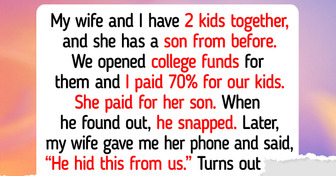Michael Jackson’s 3 Kids Make a Rare Appearance After Years and Look Unrecognizable

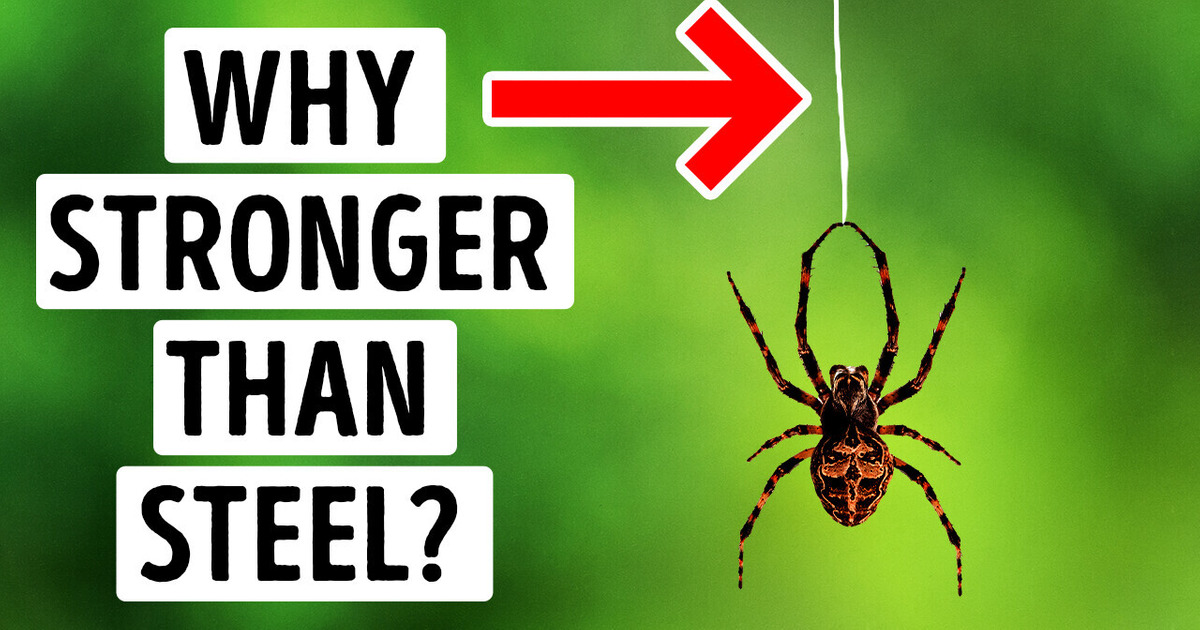
When you think about it, spiders were one of nature’s first true engineers. They make the toughest casters you can find on our planet. The silk spiders use to build webs is stronger than steel. They trap their prey in that web. They use it to dangle from the ceiling in our homes and haunt our dreams too.
Their silk is extremely stretchy. Considering how stretchy the silk is, plus the amount of force you need to use to break it — that combination shows the silk is so strong it’s able to take three times as much energy as Kevlar before it breaks.
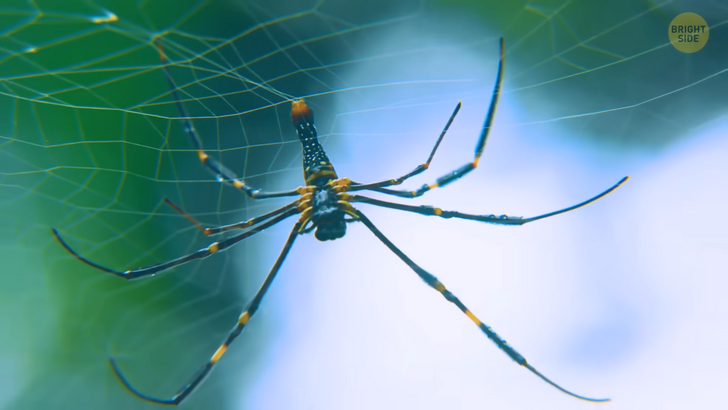
Kevlar is a synthetic material used for tires or some other rubber products like cut-resistance gloves or flame and blast barriers. It’s also a material used for sports gear. For example, it’s the thing in your running shoes that helps you maximize your energy output. With Kevlar, boats are more tolerant of damage and lighter. It’s extremely strong — 5 times stronger than steel — and lightweight at the same time.
Dragline silk is an especially strong kind of spider silk. A dragline connects the spider to its web. It’s something like a safety line in case a spider falls, and it needs to be strong enough to support the weight of the spider. A single strand consists of protein molecules, and they are aligned together really, really tightly. Each strand of spider silk is 1000 times thinner than human hair — that’s why you can break it so easily even though it’s really strong.
But each strand is still stronger than many types of steel. You’d just have to get steel equally thin to truly compare it. Scientists believe that if we could make dragline silk, for instance, as thick as a pencil and 18.6 miles long we’d have material so strong we could stop a jetliner in the middle of the flight. But the passengers probably wouldn’t like it.
When it’s windy outside and a wind or even just a light breeze catches the spider’s sturdy dragline, it catches air and turns into some kind of an open parachute. That’s when the adventure starts for a spider — its dragline bends and stretches further. That way, it can send the spider to “fly” very far away, and it won’t break. And this way, spiders can really fly away hundreds of miles.
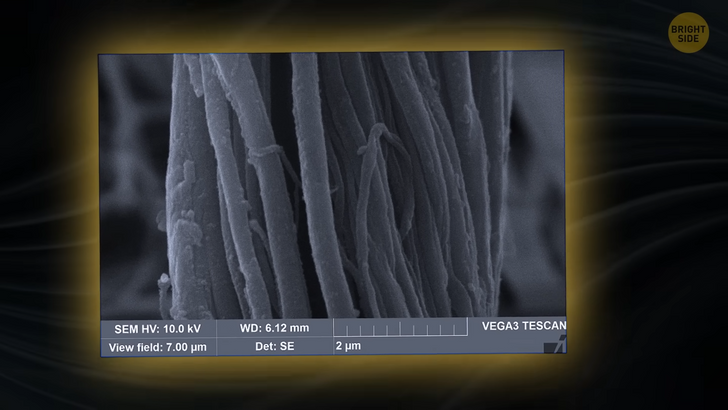
Since spider silk is so strong, it inspired researchers to come up with new material. It’s known as something called elastomer since it’s elastic like rubber. This material has a structure just like a spider web and that’s what makes it durable and allows you to evenly distribute the stress you put on it without breaking it. Just like spider silk, it’s both exceptionally tough and stiff.
Stiff materials can take a lot of stress before you manage to deform them, whereas tough materials can absorb a lot of energy before you break them. For instance, glass is stiff but not tough. When it comes to commercial materials, it’s mostly a trade-off — with higher stiffness comes lower toughness, and vice versa.
The fact this new spider silk-inspired material is high in both of these features makes it even cooler! There are more extremely hard materials we’re discovering or even inventing. For example, there’s a new type of glass that’s harder even than diamonds. Diamonds are generally the hardest of all-natural materials.
But now scientists have made a new type of carbon they named AM-III. It’s now the strongest and hardest amorphous material we know about. Amorphous means the material doesn’t really have apparent organization or shape. For example, rubber, glass, wax, and plastics.
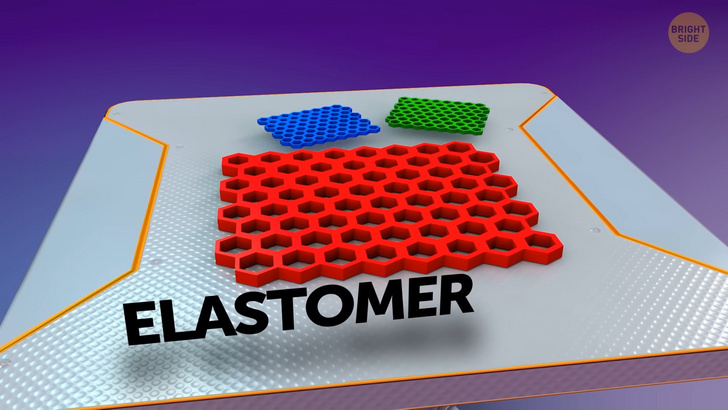
Diamonds are that strong and durable thanks to their extremely regular structure. You’d think this new material that’s even stronger than that has a structure like a diamond [tetrahedral structure] too — but it’s actually more similar to glass. You may have heard some people believe that glass is a liquid. It’s not, but we can’t really put it in the category of solid materials either. It’s a peculiar amorphous material.
So the molecules aren’t as disorganized as in a liquid, but they’re not in strict order as you’d see in a solid. AM-III conducts electricity well, but just in some cases. That means we could potentially use it to get, let’s say, solar energy. This material would come in handy for bulletproof windows that are up to 100 times tougher than the technology we currently use.
Mass production of this material will certainly be expensive, plus we’ll have to wait for researchers to test it more, but this new yellow-tinted glass is definitely a material we might see a lot of sometime in the future. The next one is Wurtzite boron nitride. It’s quite weird. It’s harder than diamond — some studies say 18 percent harder, which is a lot — AND it’s amorphous at the same time. But the craziest part is that it’s extremely rare because it forms ONLY during volcanic eruptions!
Then we have Lonsdaleite. Let’s say there’s a meteor full of carbon — that contains a bit of graphite too. It goes through the Earth’s atmosphere and eventually collides with our planet. You probably think a meteor that’s falling toward us is extremely hot. In reality, only its outer layers become hot. The interior of this object remains cool throughout most of its journey toward our planet.
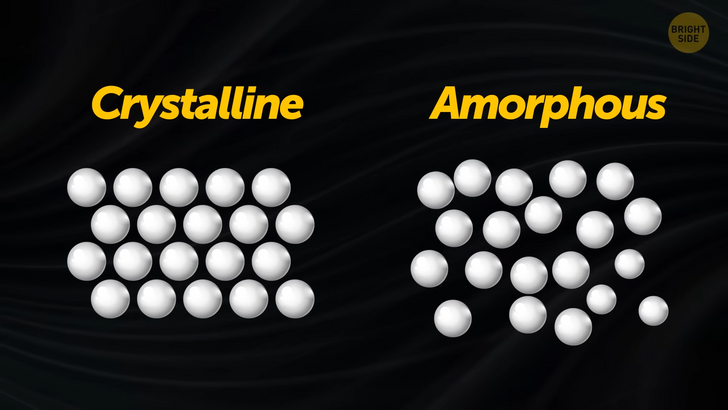
When this meteorite hits the surface of Earth, the pressure in its interior becomes insanely big. It’s stronger than any other natural process that can affect the shape of graphite or some other material. Like, if you squeeze it or try to shape it with whichever technology you’d want, you still don’t get a force that’s as strong as the pressure that occurs during this impact. Because of this, the graphite in that meteor compresses and now has a crystalline structure.
It’s not like a diamond, even better — it turns out to be 58% harder! But for now, graphite that’s harder than diamond is just a scientific theory. Scientists DO study some real examples of graphite and its different shapes. But they have only those that are not that pure.
That means there are lots of other elements in these materials that make this material softer than diamonds. But if there was a special pure graphite meteorite heading towards our planet and striking the surface, it would, without any doubt, create material way harder than any diamond we have ever found.
And how about Dyneema? It’s the strongest fiber in the world, 15 times stronger than steel. It’s also nearly 40 percent stronger than aramid fibers — for example, Kevlar used for tires, the one we’ve mentioned before. Dyneema is lighter than water but is still great for things like ropes and towing lines for the shipping industry. It’s a great material for nets for fishing and safety gloves in the metalworking field too.
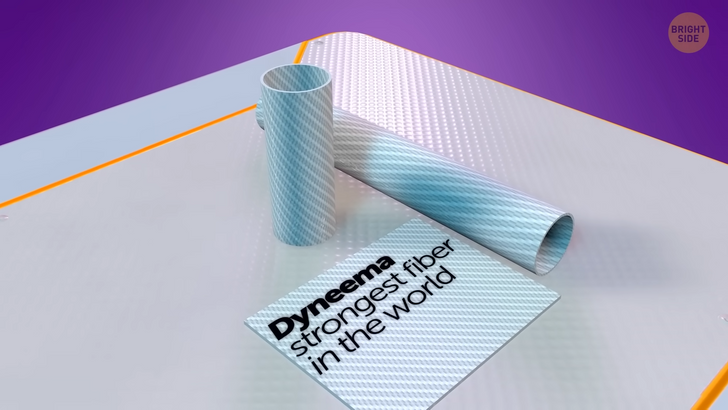
Here’s something called Palladium micro-alloy glass. As we’ve said before, there are two very important features all materials have. The first one is strength. That’s how much force some material can withstand before you manage to deform it.
The second one is toughness. This stands for how much energy you need to fracture or break it. Ceramics are mostly strong, but not very tough. Elastic materials such as rubber can hold a lot of energy, but you can deform them relatively easily. And they’re not strong.
And over a decade, researchers created a new glass with a combination of 5 elements [silicon, phosphorous, silver, germanium, and palladium] that ended up as a material that’s stronger than all types of steel. Yup, this glass will rather deform than break.
This is actually the hardest material that doesn’t include carbon. And, meet buckypaper! In the late 20th century we discovered there’s a specific form of carbon that’s, once again, harder than diamonds. It’s called carbon nanotubes.
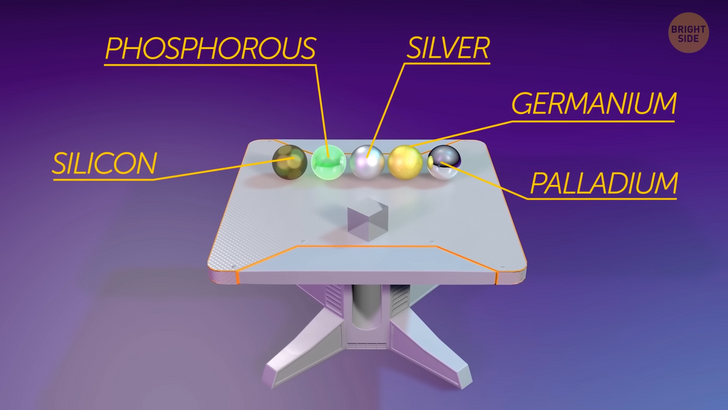
If we bind carbon into a different shape than diamond, we get a structure that’s way more stable than any other we know about. And putting these carbon nanotubes together, you create buckypaper, which is basically an incredibly strong, but also a very, very thin sheet.
It holds just 10 percent of the weight of steel, but at the same time, it’s hundreds of times stronger. Buckypaper is also fireproof. Well, that could make a very cool bucky paper airplane! Have they thought about that use?









